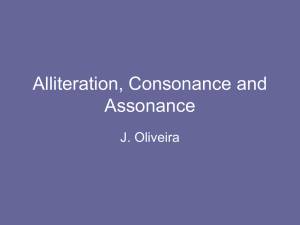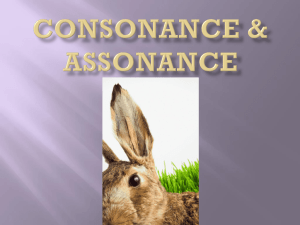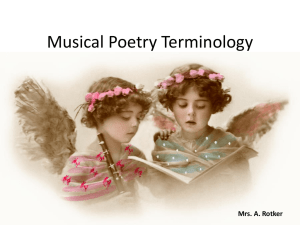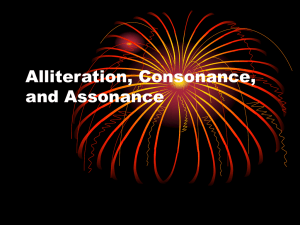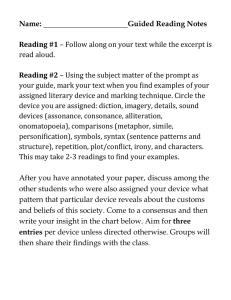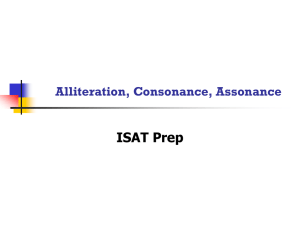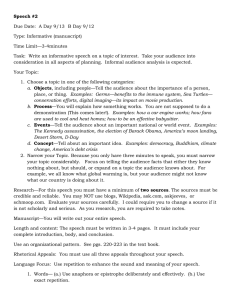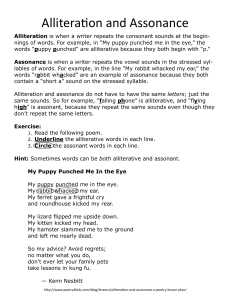Figurative Language Review
advertisement
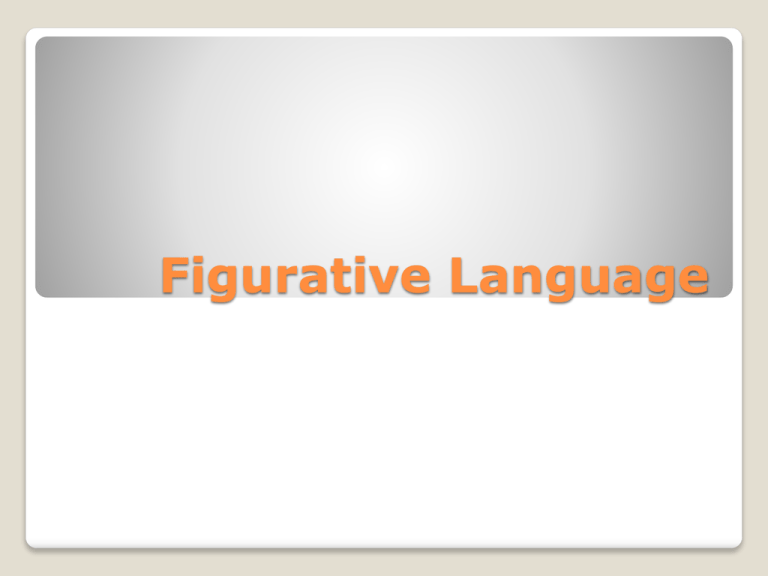
Figurative Language Figurative language is language that communicates ideas beyond the ordinary meanings of words. Types of figurative language are called figures of speech. Figurative Language A simile makes a comparison between two things using the word like or as. “Dressed like a Spanish waiter” (“Incident in a Rose Garden” by Donald Justice Simile A metaphor makes a comparison between two things without using the words like or as. “All the world’s a stage, And all the men and women merely players:” (As You Like It by William Shakespeare) Metaphor Human qualities are attributed to an object, animal, or idea. “It’s small and red with tight steps in front and windows so small you’d think they were holding their breath.” (The House on Mango Street by Sandra Cisneros) Personification Exaggerating the truth for emphasis or for humorous effect. “You could liquidate the stock here and feed an African nation for a year.” (“Life Without Go-Go Boots” by Barbara Kingsolver) Hyperbole Drastically reducing the importance of something by stating it simply Juggling chainsaws is a tad risky. Understatement The use of words such as pow, buzz, and crunch whose sounds suggest their meanings. “Eyelid and lash were seared; the pierced ball Hissed broiling,…” (The Odyssey by Homer) Onomatopoeia A figure of speech which has a different meaning from its literal meaning. “Butterflies in my stomach” really means nervous. “It’s raining cats and dogs” means its raining heavily. Idiom A play on words: a humorous use of words that involves a word or phrase that has more than one possible meaning. “Using deodorant is no sweat.” “I’m reading a book about anti-gravity. It’s impossible to put down.” Pun Repetition of beginning sounds. “Over the cobbles he clattered and clashed . . .” (“The Highwayman” by Alfred Noyes) Alliteration Assonance repeats vowel sounds to create a rhythm or beat. “I must confess that in my quest I felt depressed and restless.” ~Thin Lizzy, "With Love" Assonance Assonance examples are sometimes hard to find, because they can work subconsciously and are subtle. The long vowel sounds will slow down the energy and make the mood more somber, while high sounds can increase the energy level of the piece. Notice how the mood is set by using the long “A” in this excerpt from Cormac McCarthy's book, Outer Dark: “And stepping softly with her air of blooded ruin about the glade in a frail agony of grace she trailed her rags through dust and ashes, circling the dead fire, the charred billets and chalk bones, the little rib cage.” The words "glade," "frail," "grace," and "trailed" help set the chilling mood of the work, and it is repeated and emphasized at the end with “ribcage.” Assonance In this example by Carl Sandburg, in “Early Moon” the long “O” sounds old or mysterious. “Poetry is old, ancient, goes back far. It is among the oldest of living things. So old it is that no man knows how and why the first poems came.” Assonance Consonance is the repetition of two or more consonant sounds within a line, preceded by different vowel sounds. Often the consonant sounds come at the very end of the word, but they come in the middle as well. In the sample below, note the repetition of the letter d in the first line and the repetition of the digraph sh in the 2nd line. Breed and bread Flash and fresh Consonance Edgar Allan Poe was a master of assonance, consonance, and alliteration. From The Raven: “And the silken sad uncertain rustling of each purple curtain” ◦ Assonance is the “ur” sound in “purple” and “curtain” ◦ Consonance is the “s” sound in “uncertain” and “rustling” ◦ Alliteration is shown in the “s” sound at the beginning of "silken" and "sad". All of the Above
